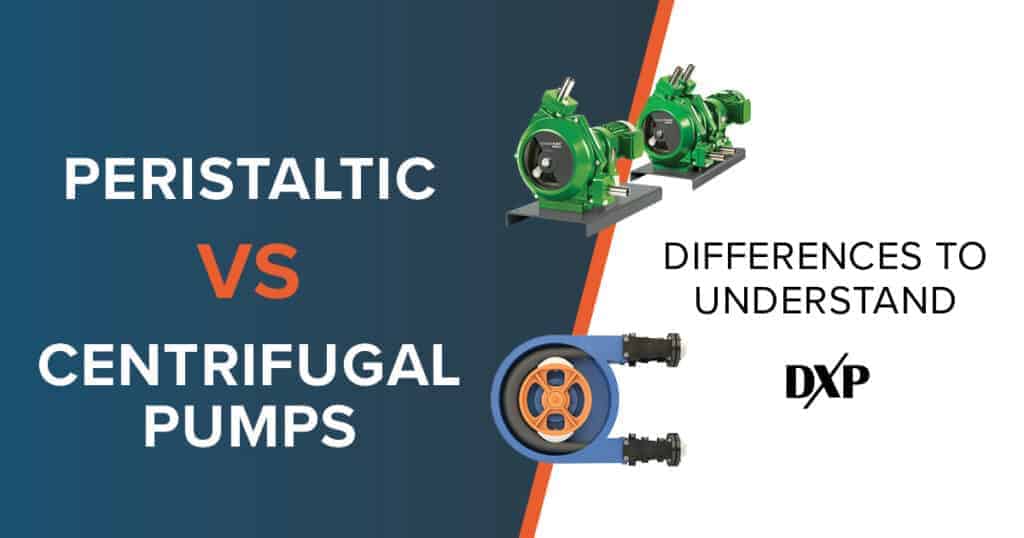All pumps fall into one of two primary categories: centrifugal pumps and positive displacement (PD) pumps. Then there are a variety of different pump types within each category. Centrifugal pumps are generally more common, while positive displacement pumps are often more specialized for specific fluid, slurry, and solids pumping applications.
One of the most interesting types of positive displacement pumps is the peristaltic pump. In this article, we will compare the key operating differences between peristaltic vs. centrifugal pumps. We will also explore some of the notable advantages and disadvantages of each pump type.
How Do These Pumps Work?
Centrifugal pumps utilize a rotating impeller to create centrifugal force that pulls the process fluid into the suction port and expels it through the outlet port. Peristaltic pumps are sometimes referred to as hose pumps, tube pumps, or roller pumps, and the design concept is fairly simple to understand. They feature an elastomeric tube that holds the fluid as it runs through the pump. A roller runs along the tube to pull fluid into the inlet and force fluid out of the outlet with vacuum pressure.
Peristaltic pumps are popular in industries such as chemical processing, food and beverage, and wastewater management. Centrifugal pumps are used in these industries as well. The right choice may depend on the process material, application, and overall pumping results you are looking to achieve. Here are a few of the reasons why you may choose a peristaltic pump over a standard centrifugal pump for certain pumping applications:
Self-Priming
Peristaltic pumps are self-priming. They can be started and stopped easily without having to prime the pump, which is typically required with most centrifugal pumps.
Energy Efficiency
One reason operators like peristaltic pumps is they are generally more energy-efficient than centrifugal pumps and many other PD pump types. They are not ideal for every application though, so operating cost shouldn’t be your only consideration. There is a reason why centrifugal pumps are more widely used. They are adaptable to a larger variety of general pumping applications.
Fluid Containment
There are no impellers or blades inside of a peristaltic pump. The process fluid is fully contained within the elastomer tube and will not be exposed to any internal or external parts of the pump. This helps prevent fluid contamination and minimize the risk of leaks.
Maintenance
Peristaltic pumps are relatively easy to maintain. The tube will need to be replaced periodically, but otherwise they do not require a ton of maintenance or repair to keep running efficiently.
Versatility
Peristaltic pumps are versatile in their own way. They can handle highly viscous fluids, high-pressure applications, and abrasive particles. However, centrifugal pumps are generally considered much more versatile. That is why they are used so commonly. It is important to understand your specific application to determine the right type of pump for the best processing results.
For help with all your pump selection needs or to learn more about the benefits of peristaltic pumps from leading manufacturers like Verder and ISM Pumps, contact DXP Pacific today.

